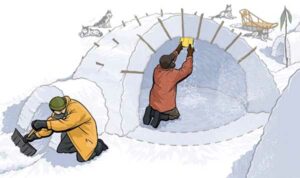
How to Build a Quinzee snow shelter – Infographic
A quinzee snow shelter is a type of winter shelter made by hollowing out a pile of snow. It is similar to an igloo, but instead of using blocks of snow, the quinzee is made by piling up snow and then letting it settle and harden before hollowing out the inside.
The process involves compacting the snow pile and then allowing it to set for several hours or overnight. Once the snow has hardened, the builder can then cut out a doorway and hollow out the interior to create a shelter.
A quinzee can provide protection from the wind and cold and is often used by winter campers and survivalists. Below is our guide on building a quinzee – snow shelter:
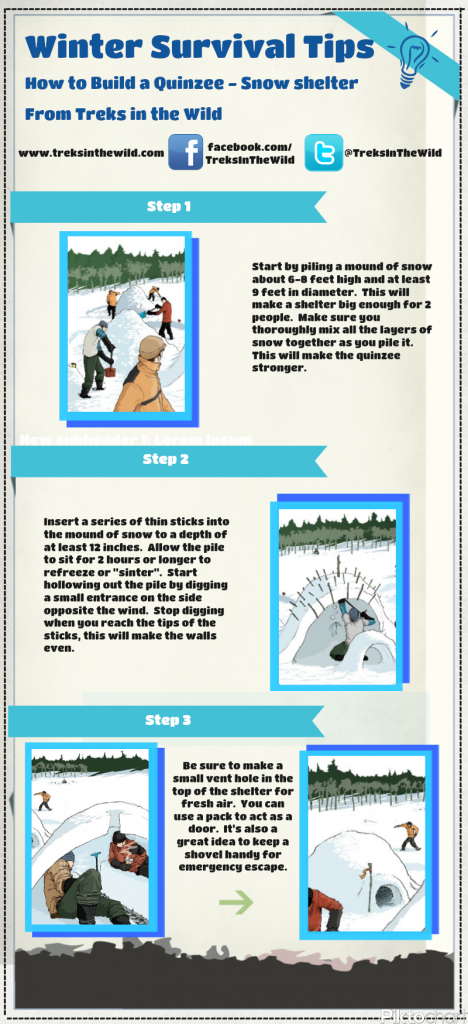
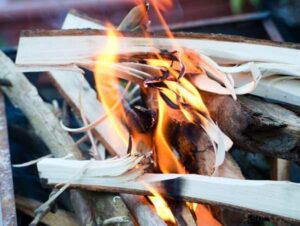
Primitive Fire Starting Workshop – Southern Ontario
Have you ever tried to make fire with primitive tools? Using a flint & steel, or a firebow, or hand drill is not as hard as you think. This primitive fire starting workshop will give you an introductory understanding of the principles involved. We’ll teach you everything you need to know to master this extremely useful backcountry skill.
What you will learn
- We start off by covering the basic principles that apply to all friction fire methods and break them down so they are easy to understand.
- Success or failure in primitive fire making often hinges on your ability to identify and select the best materials for each method you are using. We will walk you through this very important step along with the different components you will need and how to make them.
- Turning muscle motion and friction into heat is what produces a coal or ember. This is where the practice part comes in. We’ll teach you the different techniques but the rest is hard work and practice.
- Congratulations…You have produced a coal! Once you get to this point, you don’t want all that hard work to be lost. We’ll show you what you need to do next to turn that little glowing ember into a flame.
Additional Topics Covered
- suitable tinder
- proper fuel selections
- using coal extenders
- selecting natural materials used for “flint”
- making and using a tinder box & charred cloth
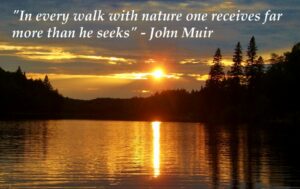
Backcountry canoe trips – Why do we go?
I sometimes get asked why we go to all the trouble of planning, packing and paddling, otherwise known as the 3P’s of backcountry canoeing, when there are so many other recreational activities that require much less effort. Long days of paddling and difficult portages. Dealing with the elements, weather and bugs. Sleeping on the hard uneven ground instead of a nice soft bed.
This question has many answers and everyone’s is different. Some go for the solitude, some for the beauty that can only be found in nature. Still, for others it’s the sense of adventure or reconnecting to the ways of our ancestors.
Let’s not forget the sense of accomplishment you can only get from epic journeys. For me it’s a combination of all of these, when I’m on a backcountry canoe trip I’m truly at peace. I feel a sense of harmony with my environment that I can only get when I’m in wild places.
John Muir’s quote above speaks volumes as to the “why”.
In truth, the short answer is that “the difficult path leads to things that are worth the effort.” For the long answer, they say a picture is worth a thousand words so I will let some photographs speak for themselves.
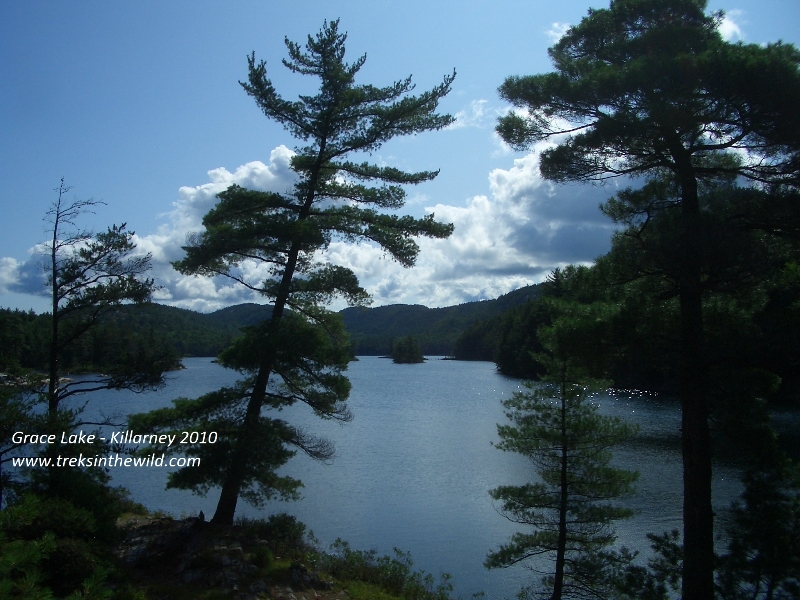
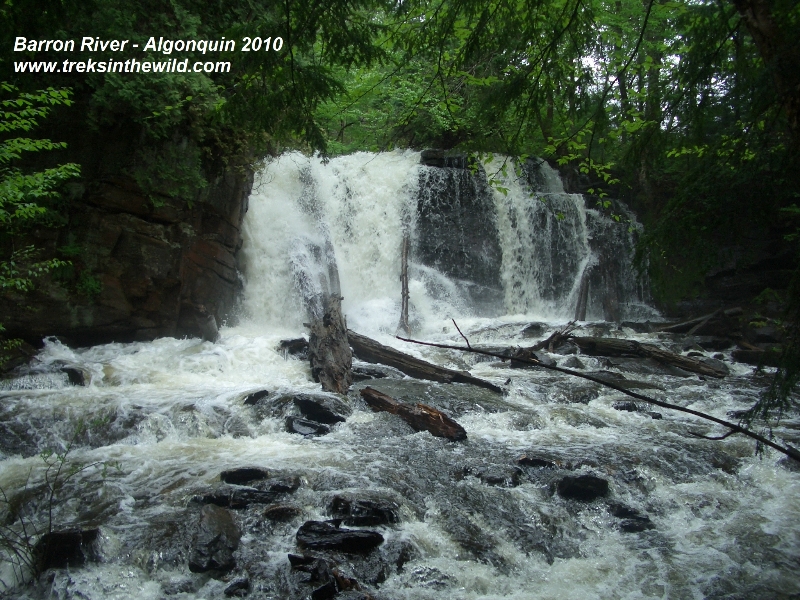
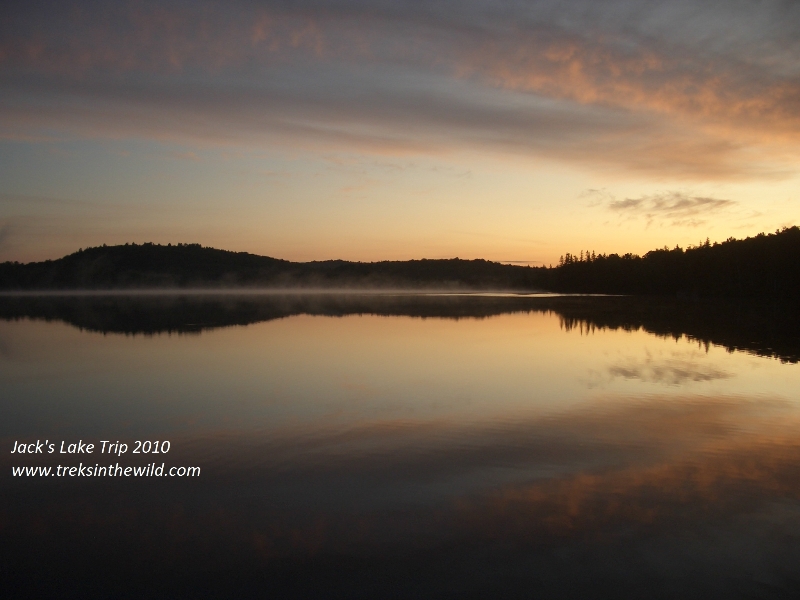

Grow Your Own Wild Edibles: Top 20 Plants in Southern Ontario to Grow at Home
Are you looking to add some unique and healthy ingredients to your meals? Look no further than your own backyard! Southern Ontario is home to a variety of wild edible plants that you can easily grow at home. Not only are these plants delicious, but they’re also packed with nutrients and have a low environmental impact.
Here are the top 20 wild edible plants that you can grow in your own backyard in Southern Ontario. From the tartness of wild strawberries to the nutty flavor of burdock root, these plants offer a variety of tastes and textures to add to your meals. Plus, growing your own food is a rewarding experience that allows you to connect with nature and reduce your carbon footprint. So, let’s get started!
Understanding Edible Plants
When it comes to foraging for wild edibles, it’s important to have a good understanding of the plants you’re looking for. Not all plants are safe to eat, and some can be downright dangerous. Here are a few things to keep in mind when identifying and harvesting wild edibles:
Top 20 Wild Edibles in Southern Ontario to Grow at Home
If you are interested in growing your own food and want to explore wild edibles, Southern Ontario has a lot to offer. Here are the top 20 wild edibles that you can grow at home:
Stinging Nettle
Stinging nettle is a highly nutritious plant that can be used in soups, stews, teas, and more. It is rich in vitamins, minerals, and antioxidants. Make sure to wear gloves when harvesting this plant to avoid getting stung.
Dandelion
Dandelion is a common weed that is often overlooked. However, it is highly nutritious and can be used in salads, soups, and teas. Dandelion is rich in vitamins, minerals, and antioxidants.
Cultivating Wild Edibles at Home
Growing wild edibles at home can be a fun and rewarding experience. With a little bit of knowledge and effort, you can cultivate a variety of wild edibles right in your own backyard. Here are a few tips to get you started:
Choose the Right Location
When selecting a location for your wild edibles garden, it’s important to choose a spot that gets plenty of sunlight and has well-draining soil. Most wild edibles prefer full sun, but some can tolerate partial shade. Be sure to also consider the size of the plants you want to grow and give them enough space to grow and spread out.
Prepare the Soil
Before planting, prepare the soil by removing any weeds or grass and adding compost, fertilizers or other organic matter. This will help improve soil fertility and drainage. Wild edibles generally prefer slightly acidic soil with a pH between 6.0 and 7.0.
Read More
How to Identify Poison Ivy – Infographic

Treks In The Wild operates in beautiful Ontario, Canada. Our goal is to lead people to places where they can experience their own awe-inspiring connections with nature. We offer various workshops from wild edible plants to primitive fire-making for survival and hunting guides.
Read More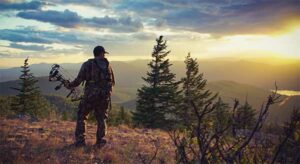
Preparing for a Backcountry Hunting Trip: Essential Tips and Gear
Preparing for a backcountry hunting trip can be an exciting and challenging experience. It requires careful planning and preparation to ensure a safe and successful trip. Whether you are a seasoned hunter or a beginner, there are several factors to consider before embarking on your adventure.
The first step in preparing for a backcountry hunting trip is to research the area you plan to hunt. This includes learning about the terrain, weather patterns, and wildlife in the area. It is also important to obtain any necessary permits and licenses for hunting in the area. Additionally, it is important to familiarize yourself with the local regulations and laws governing hunting in the area.
Another important aspect of preparing for a backcountry hunting trip is to ensure that you have the proper gear and equipment. This includes appropriate clothing, footwear, and hunting gear such as a rifle or bow. It is also important to pack enough food, water, and other supplies to last for the duration of your trip. Proper gear and equipment can make a significant difference in your comfort and safety while on your hunting trip.
Physical Preparation
Preparing for a backcountry hunting trip requires physical preparation. You need to be in good shape to handle the demands of hunting in the wilderness. Here are some tips to help you get physically prepared:
- Start with cardio exercises like running, cycling, or hiking. These exercises help to improve your endurance and stamina.
- Incorporate strength training exercises like weight lifting, push-ups, and squats. These exercises help to improve your muscle strength and stability.
- Practice carrying a weighted backpack. This will help you get used to carrying the weight of your hunting gear and supplies during the trip.
It’s important to gradually increase the intensity and duration of your workouts to avoid injuries. Also, make sure to stay hydrated and properly fueled with a balanced diet.
| Exercise Type | Frequency | Duration |
|---|---|---|
| Cardio | 3-4 times a week | 30-60 minutes |
| Strength Training | 2-3 times a week | 30-45 minutes |
| Backpack Carrying | 1-2 times a week | 30-60 minutes |
Remember, physical preparation is key to a successful backcountry hunting trip. Take the time to get in shape and you’ll be able to handle the challenges of the wilderness with ease.
Gear and Supplies
Clothing and Footwear
When preparing for a backcountry hunting trip, it is important to pack appropriate clothing and footwear. The weather in the backcountry can be unpredictable, so it is essential to bring clothing that can protect you from the elements. Here are some items to consider:
- Moisture-wicking base layers
- Insulating mid-layers
- Waterproof outer layers
- Sturdy hiking boots with ankle support
- Extra socks
- Gloves and hats
Backpacking Gear
When backpacking into the backcountry, it’s important to have the right gear to make the trip as comfortable and safe as possible. Here are some items to consider:
- A sturdy backpack with a frame
- A lightweight tent
- A warm sleeping bag
- A sleeping pad for insulation and comfort
- A water filter or purification tablets
- A stove and fuel for cooking
- Cooking utensils and a pot
- A headlamp or flashlight with extra batteries
Hunting Gear
When packing for a backcountry hunting trip, it’s important to bring the right gear to make the hunt successful. Here are some items to consider:
- A hunting rifle or bow with appropriate ammunition or arrows
- A hunting knife for field dressing game
- Optics like rifle scopes for shooting, binoculars for scouting, and spotting game. For everything related to optics, I recommend you to follow some expert guys from Optics Junkies, they did a great job on this subject.
- A GPS or map and compass for navigation
- A game bag for transporting meat
- Blaze orange clothing for safety
Emergency Supplies
When venturing into the backcountry, it’s important to be prepared for emergencies. Here are some items to consider:
- A first aid kit with essential supplies
- A personal locator beacon (PLB) or satellite messenger for emergency communication
- A whistle and signal mirror for attracting attention
- Extra food and water in case of an emergency
- A space blanket or emergency shelter for warmth
Backcountry Hunting Meals
One of the most important aspects of a successful backcountry hunting trip is proper nutrition. You need to fuel your body with the right foods to keep you energized and focused during long days of hiking and hunting. Here are some tips for planning your backcountry hunting meals:
- Choose lightweight, high-calorie foods that are easy to pack and don’t take up too much space in your pack.
- Consider dehydrated or freeze-dried meals, which are a popular option for backcountry hunters. These meals are lightweight, easy to prepare, and can be rehydrated with hot water.
- Bring plenty of snacks to keep your energy levels up throughout the day. Nuts, jerky, energy bars, and dried fruit are all good options.
- Don’t forget to bring a stove and fuel to cook your meals. A lightweight backpacking stove is a good option for backcountry hunting trips.
When planning your meals, it’s important to consider your dietary needs and preferences. If you have any food allergies or restrictions, make sure to bring food that meets your needs. It’s also a good idea to pack some comfort foods or treats to boost morale during long days in the backcountry.
| Breakfast | Lunch | Dinner |
|---|---|---|
| Oatmeal with dried fruit and nuts | Trail mix, jerky, and energy bars | Dehydrated chili with rice |
| Instant coffee or tea | Peanut butter and jelly on tortillas | Dehydrated beef stroganoff with noodles |
| Granola with powdered milk | Cheese and crackers | Dehydrated spaghetti with meat sauce |
Remember to pack out all of your trash and food waste to minimize your impact on the environment. With a little planning and preparation, you can enjoy delicious and nutritious meals during your backcountry hunting trip.
Read More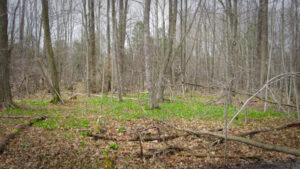
Wild Edible Plants Workshop – Southern Ontario
Ever wonder how our ancestors could have possibly survived before the invention of the Supermarket? How did they get plants and vegetables in their diet? This is an introductory course designed start you off with the basics, focusing on species that have few or no poisonous look-a-likes. We will discuss plants that are plentiful easy to find and grow almost everywhere in our area.
What you will learn
We’ll teach you how to identify some of the commonly found wild edible and medicinal plants that grow in our area, along with their uses and the different methods to prepare them properly. We will briefly discuss mushrooms as a wild edible, but we will not be identifying or dealing with them in depth. Other topics we will cover:
- sustainability and preventing over harvesting
- common identification mistakes
- how to use your field guide
What’s included
- Introductory Wild Edible Plants Guidebook
- 2-3 hour instructional workshop including a short nature walk
- A presentation of how to prepare a selection of wild edibles
The human species has lived very successfully for thousands of years as a Hunter-Gatherer society. In order to gather, you needed to be able to safely identify plants that are edible and avoid ones that could cause you harm. Like most primitive skills, it is one that has been lost in most of modern civilization.
Whether you want to learn about wild edibles as a survival skill for use in an emergency or you just have an interest in foraging, you’ll enjoy this course. Please contact us for more information about the course.
Read More